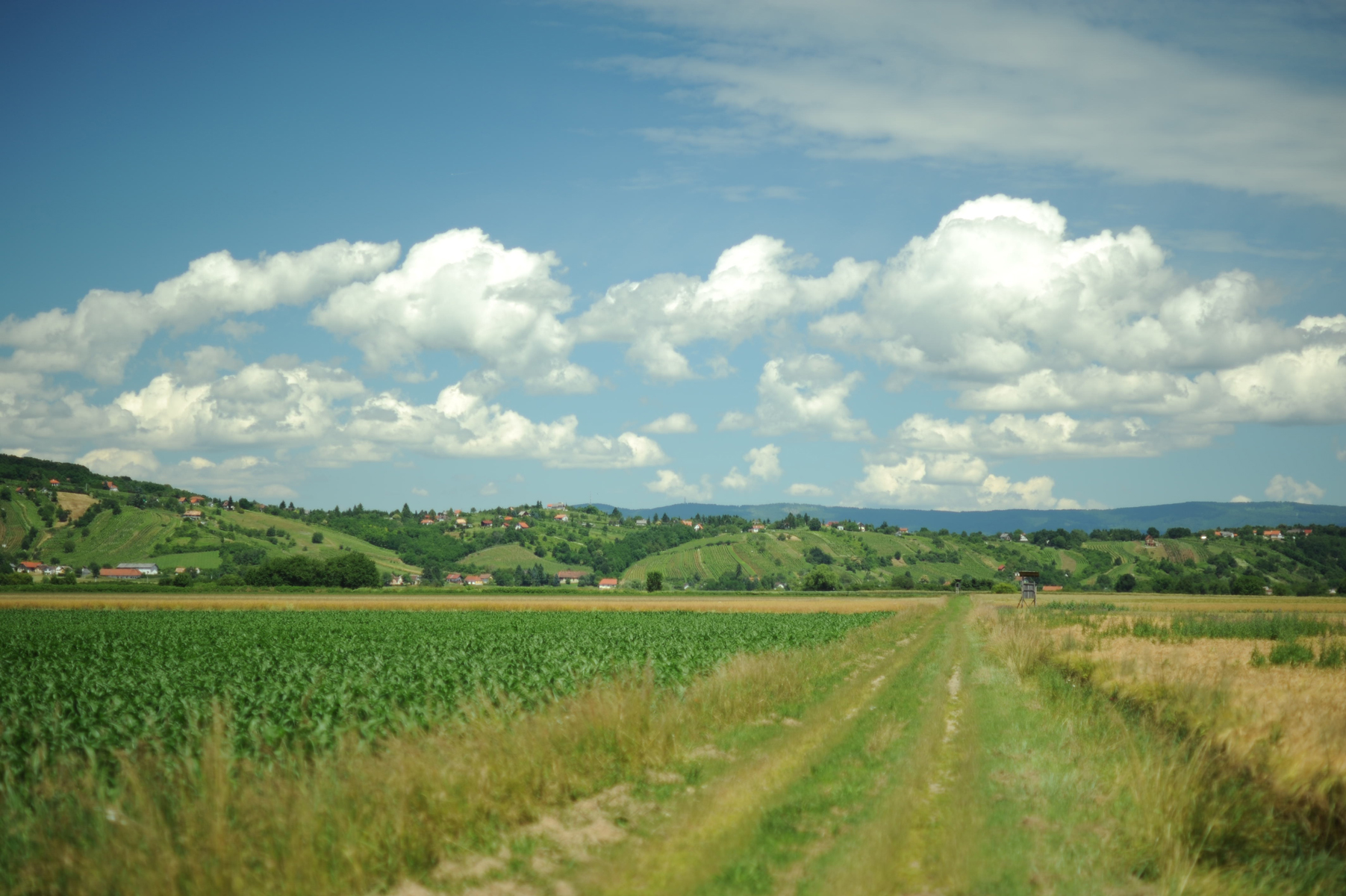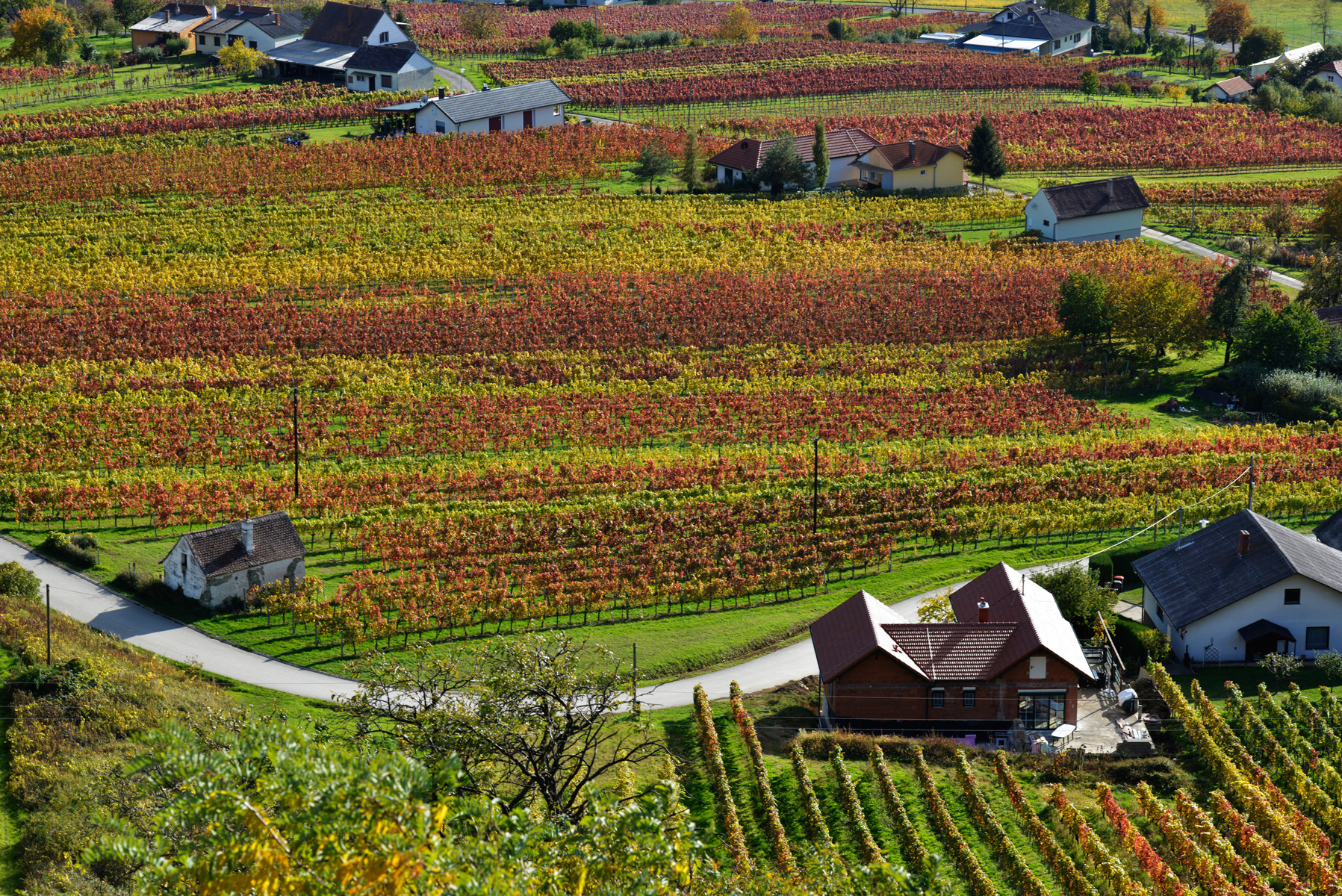Idyllisch-ursprüngliches SÜDBURGENLAND . Umgeben von Ungarn, Slowenien, der Steiermark und Niederösterreich. Die Verbindung zum Rest des Burgenlandes: ein Nadelöhr. Seit jeher GRENZGEBIET, immer eigenständig und immer begehrt – vor allem wegen seiner Weine.
Grenzgebiet
Eigenständig, begehrt und selbstbewusst: ein Grenzgebiet mit Charakter
Die geografische Lage des Gebiets rund um den Eisenberg ist eine Besondere – und lässt eine bewegte Geschichte vermuten. Direkt vor der Tür gen Osten: die Grenzen nach Ungarn und Slowenien. Im Westen: die Steiermark und Niederösterreich. Die Verbindung zum nördlichen Teil des Burgenlandes: ein Nadelöhr.
Das überwiegend deutschsprachige Südburgenland war politisch und kulturell die längste Zeit Teil von Ungarn – was dem Eisenberger Wein zur Zeit des Königreichs Ungarn und der k. u. k. Doppelmonarchie ein großes Verbreitungsgebiet bot: Er war beliebtes Exportgut. Als nach dem 1. Weltkrieg die ungarische Grenze neu gezogen werden sollte, entschied eine Kommission, die Gegend Österreich zuzusprechen. Woraufhin das Burgenland 1921 mit einem Volksentscheid in die Republik Österreich eingegliedert wurde.
Zwar ist das riesige Potenzial der Region rund um den Eisenberg schon seit langer Zeit bekannt – der Aufschwung ließ im Vergleich zu den anderen burgenländischen Weinbauregionen jedoch auf sich warten. Die geringe Gesamtgröße des Südburgenlandes, seine idyllische Abgeschiedenheit und die kleinen betrieblichen Strukturen hemmten die Weiterentwicklung. Zudem war der Weinskandal von 1985 für viele Winzer ein Grund, ihre Weingärten zu verkaufen oder brach liegen zu lassen. Erschwerend kam hinzu, dass in den 1980er und -90er Jahren vor allem weiche, leicht zu trinkende Rotweincuvées den Geschmack der Kunden bestimmten. So beschränkte sich der Absatz der Eisenberger Weine lange Zeit auf lokale Buschenschenken. Nur wenige Winzer vertrieben ihre Erzeugnisse auch außerhalb der Region. Die Folge: Landflucht und Überalterung. Die Region verfiel in einen Dornröschenschlaf.
Zum Glück gab es aber auch einige Querdenker, die an das Potenzial ihres Gebiets glaubten. Und die Zeit nutzen, um sich auf die Stärken ihrer Heimat zu besinnen. Heute stellen sie eindrucksvoll unter Beweis, wie Recht sie damit hatten. Schließlich hat sich international einiges geändert: Der Weingeschmack ist differenzierter und geschulter geworden, während der Trend weggeht von globalen Traubensorten und hin zu autochthonen, terroirgeprägten Weinen. Perfekte Voraussetzungen, um den Blaufränkisch vom Eisenberg weltweit bekannt zu machen.
Als die Einführung des österreichischen Appellationssystems DAC im Jahr 2002 erstmals die Herkunft eines Weines über die Rebsorte stellte – mit dem Ziel der Förderung regionaltypischer Weine – wurde im südlichen Burgenland das DAC-Gebiet Eisenberg definiert. Die 46 Winzer im Verein EisenbergDAC sind darauf aus, einen gebietstypischen Stil wiedererkennbar zu vinifizieren. Und darauf, die charakterstarken Weine des Südburgenlandes auf dem Radar der führenden Weinhändler und Sommeliers dieser Welt zu positionieren. Schwer wird es ihnen nicht fallen – denn die Fangemeinde des „Eisenbergers“ wächst mit jedem getrunkenen Glas.

